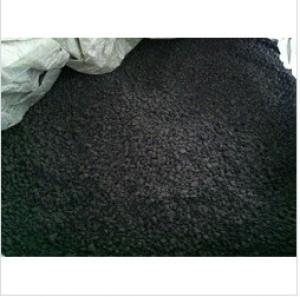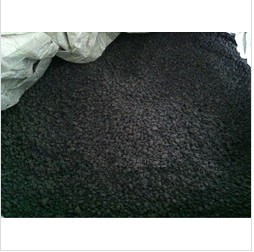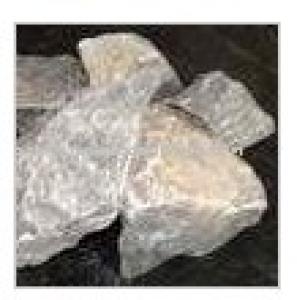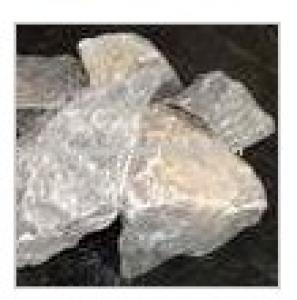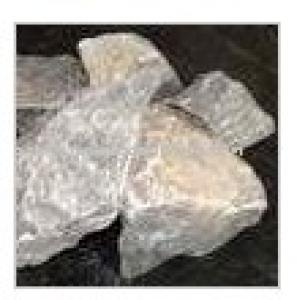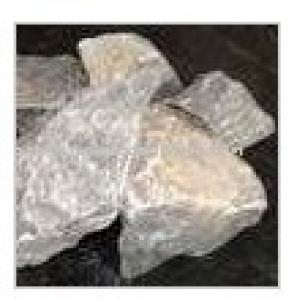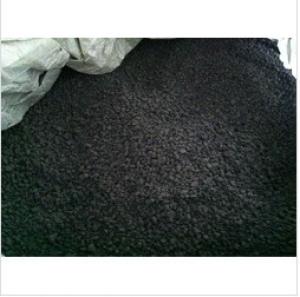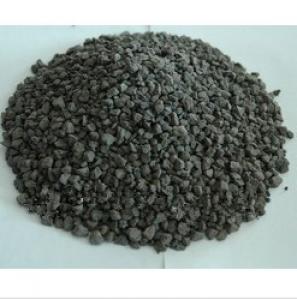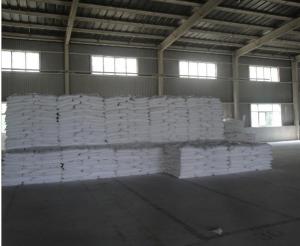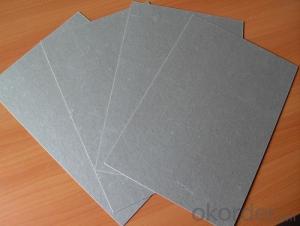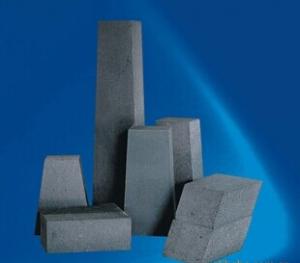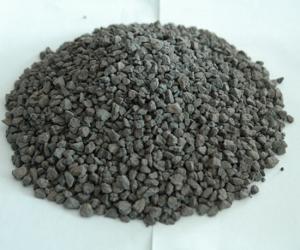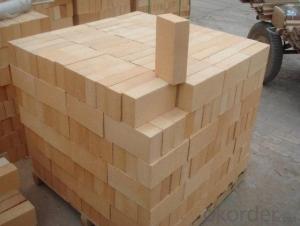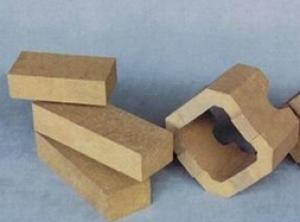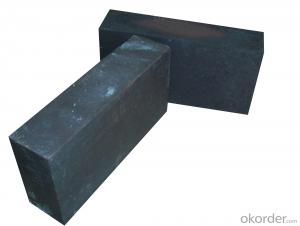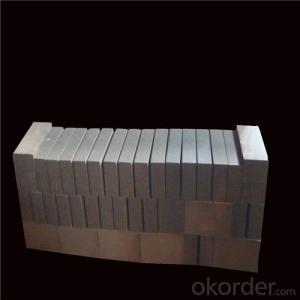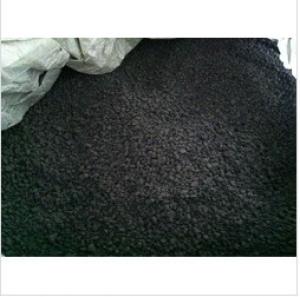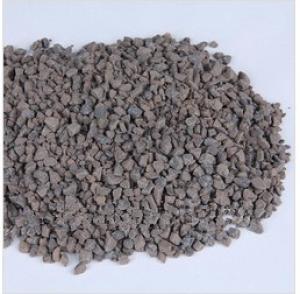Magnesia Dolomite Clinker /Refractory
- Loading Port:
- China Main Port
- Payment Terms:
- TT or LC
- Min Order Qty:
- 20 Tons m.t.
- Supply Capability:
- 2000 Metric Tons per Month m.t./month
OKorder Service Pledge
Quality Product, Order Online Tracking, Timely Delivery
OKorder Financial Service
Credit Rating, Credit Services, Credit Purchasing
You Might Also Like
Quick Details
- Shape: Ball
- Material: dolomite
- SiO2 Content (%): 0.8max
- Al2O3 Content (%): 0.4max
- MgO Content (%): 37-39
- CaO Content (%): 55-53
- Refractoriness (Degree): 1770�< Refractoriness< 2000�
- CrO Content (%): /
- SiC Content (%): /
- Model Number: MCA-54
- Fe2O3 content (%): 5-7
- B. D: 3.25g/cm3 min
- Q: CO2 is used to deacifiy olive oil, wine, water, etc. So how is it leading to increasingly acidified oceans?
- They are implying doom when the actual increase in CO2 in the ocean is about 4 parts per thousand. There is 50 times as much in the ocean as the air. 1/3 of human produced CO2 went into the ocean of the 1/3 we increased the concentration in the air. You make a devastating argument with the fact the CO2 isn't constant in concentration. They are forced to just put their heads in the sand and ignore reality. It is convenient for their propaganda and they distort it in any way possible to make it sound dire. It is just an observed change of 0.075 pH units. The change in ions happens when there is a change in temperature. There has been an increase in volcanoes because of the the loss of the of the geostatic pressure after the ice age. There is also the possibility that it is create by life. Life changes pH during many of biochemical processes. Considering that CO2 is removed in the ocean as part of the carbon cycle, I doubt that CO2 will have a significant effect.
- Q: How did Shane McConkey die?
- Base jumping accident in the Dolomites.
- Q: Dolomite MgO content 18-23, what can be used?
- Stone as a basic flux used in blast furnace smelting, is a typical carbonate minerals, its main component is calcium carbonate, magnesium carbonate and a small amount of silica impurities, mainly by simple analysis to the usually three. Analysis of sodium carbonate melt system standard, due to the use of platinum crucible, the analysis of the cost increase, put forward higher requirements for daily management.
- Q: Ive been looking for awhile now on the internet, and I haven‘t found a place selling the XXX Lite or a place that doesn‘t have it sold out. I love my XXXX, but I break alot of sticks a year and money is becoming a problem. I heard they are one of the greatest sticks some people have ever used and I heard this one was a bit cheaper than the XXXX.I currently have:-2 Easton Synergy Elites-Nike Bauer Vapor XXXXI just went up to Colorado and broke a Warrior Dolomite and an Easton Synergy SE16.If you guys have any other stick recommendations I would appreciate it completely.I was looking into getting some of these sticks maybe:-SE16-S17-Dolomite ‘07 or ‘08 models-One95/85Can anybody tell me their thoughts on these sticks, and when you think some of them might be going down in price and about when they will be decreasing.Thanks in advance!
- If you like the vapor xxxx, then either the se16 or the dolomite would fit you well. The xxxx is a low-kickpoint stick, unlike the one95 and s17, which are built more for powerful slapshots. The xxxx will go down in price when the new vapors come out. Not exactly sure when this will be though Just look for deals online, or any sales in store.
- Q: although there are limestone beds located in great depths, why are they not metamorphosed??
- All three can be assisted by looking right through the obstruction – do not look at the few feet in front of the wheel – get your chin up and focus on where you want to go.
- Q: any help is highly appreciated :]
- It depends whether you mean the province where Trento is located, or if you mean Trentino Alto Adige, the whole region. In both cases, there are the Alps, especially the Dolomites and there are also many valleys. Edit: There are many rivers; the most important is Adige; there are also several lakes. This is the list of lakes shown in pedia Italia regarding Trentino (word lago means in italian lake): lago di Anterselva, lago di Braies, lago di Caldaro, lago di Dobbiaco, lago di Caldonazzo, lago di Carezza, lago di Cei, lago di Landro, lago di Ledro, lago di Levico, lago di Molveno, lago di Resia e lago di Tovel. In Trentino there is the northern end of Lake Garda, which is one of the biggest in Italy. The highest mountain is the Palla Bianca/Weisskugel (3764 m), which is also the third highest mountain in Austria.I hope this helped
- Q: Anyone know a good site or would be able to tell me everything I would need to get,to get into making a saltwater fish tank?
- Yes. Compression fittings for copper were available long before other pipe materials. I prefer soldering copper but if the pipe is in an area where it can be seen at all times, you can use compression fittings for hot and cold applications. You do not need anything on the threads.
- Q: it‘s a type of lime and it‘s in the form of a grey powder. is it possible to make explosions with it that are similar to the ones made using coal, sawdust, etc?
- It's on the inside of your door.
- Q: What is the mineral Diopside and its uses?
- Diopside is a monoclinic pyroxene mineral with composition MgCaSi2O6. It forms complete solid solution series with hedenbergite (FeCaSi2O6) and augite, and partial solid solutions with orthopyroxene and pigeonite. It forms variably colored, but typically dull green crystals in the monoclinic prismatic class. It has two distinct prismatic cleavages at 87 and 93° typical of the pyroxene series. It has a Mohs hardness of six, a Vickers hardness of 7.7 GPa at a load of 0.98 N[4], and a specific gravity of 3.25 to 3.55. It is transparent to translucent with indices of refraction of nα1.663–1.699, nβ1.671–1.705, and nγ1.693–1.728. The optic angle is 58° to 63°. Gemstone quality diopside is found in two forms: the black star diopside and the chrome diopside (which includes chromium, giving it a rich green colour). At 5.5–6.5 on the Mohs scale, chrome diopside is relatively soft to scratch. The Mohs scale of hardness does not measure tensile strength or resistance to fracture. Violane is a manganese-rich variety of diopside, violet to light blue in colour. Diopside based ceramics and glass-ceramics have potential applications in various technological areas. A diopside based glass-ceramic named 'silceram' was produced by scientists from Imperial College, UK during 1980s from blast furnace slag and other waste products. The as produced glass-ceramic is a potential structural material. Similarly, diopside based ceramics and glass-ceramics have potential applications in the field of biomaterials, nuclear waste immobilization and sealing materials in solid oxide fuel cells.
- Q: in what region would you expect to fine sinkholes?
- A region with sinking groundwater levels or sub-surface rock that is dissolving. Sinkholes are common where the rock below the land surface is limestone, carbonate rock, salt beds, or rocks that can naturally be dissolved by circulating ground water. As the rock dissolves, spaces and caverns develop underground.
Our company produces a wide range of refractory materials, including magnesia alumina spinel, sintered dolomite, synthetic magnesia dolomite sinter and various monolithic refractories. Our company has built long-term and stable cooperation with many refractory companies all over the world. Our monolithic refractories are 100% exported to Japan and are catered for steel plants all over Japan. Our stable quality has gained us a very good reputation among Japanese customers.
We believe that the existence is based on good quality and the development is based on good credit. Our company will strive to be a reliable supplier.
1. Manufacturer Overview
| Location | Liaoning,China (Mainland) |
| Year Established | 1997 |
| Annual Output Value | US$10 Million - US$50 Million |
| Main Markets | North America South America Eastern Europe Southeast Asia Mid East Eastern Asia Western Europe Northern Europe Southern Europe South Asia Domestic Market |
| Company Certifications |
2. Manufacturer Certificates
| a) Certification Name | |
| Range | |
| Reference | |
| Validity Period |
3. Manufacturer Capability
| a) Trade Capacity | |
| Nearest Port | Bayuquan port,Dalian port,Xingang port |
| Export Percentage | 51% - 60% |
| No.of Employees in Trade Department | 3-5 People |
| Language Spoken: | English, Chinese, Japanese |
| b) Factory Information | |
| Factory Size: | 5,000-10,000 square meters |
| No. of Production Lines | Above 10 |
| Contract Manufacturing | OEM Service Offered |
| Product Price Range | Low and/or Average |
Send your message to us
Magnesia Dolomite Clinker /Refractory
- Loading Port:
- China Main Port
- Payment Terms:
- TT or LC
- Min Order Qty:
- 20 Tons m.t.
- Supply Capability:
- 2000 Metric Tons per Month m.t./month
OKorder Service Pledge
Quality Product, Order Online Tracking, Timely Delivery
OKorder Financial Service
Credit Rating, Credit Services, Credit Purchasing
Similar products
Hot products
Hot Searches
